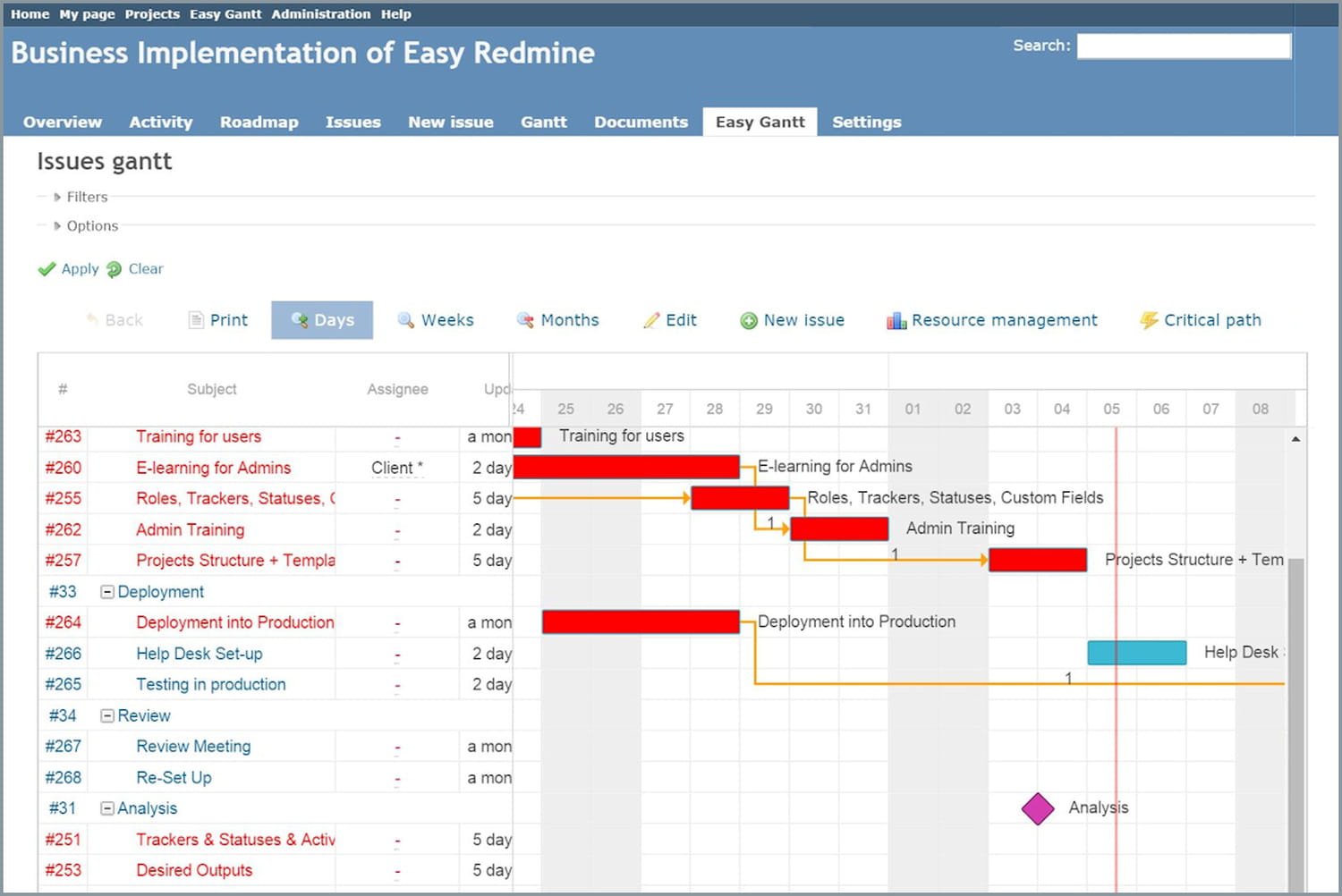
Open source project management application, Redmine has gained in popularity until it competes with proprietary and paid applications. Presentation, tutorials, prices… Overview.
Redmine is an app belonging to the category Project management software. Open source, Redmine is free. Under the GNU GPL license it can be called free software. This license allows to use it for one’s own purposes, but also to redistribute it as long as one redistributes modified versions.
Written in the Ruby language, Redmine is based on the Ruby on Rails framework. It is available for Linux, Mac, Unix and Windows. On the database side, Redmine can use MySQL, PostgreSQL or SQLite.
Redmine is available for download from the open source project of the same name. The application is available for Windows or MacOS.
Why Redmind ?
Redmine covers all the key features of a project management application worthy of the name. Among the main ones are:
- Multi-project management,
- Management of user groups,
- The multi-project wiki,
- Customization of request fields,
- Management of roadmaps,
- A discussion forum by project,
- Gantt charts to visualize the progress of a project,
- Support and ticketing management,
- Etc.
Like most of its competitors, Redmine has tutorials to learn how to use its open source project management environment. Available online, you just have to open an account on the application’s website to start using it. Note that the tool is mainly used with the Scrum agile method.
On the site of the open source project, a user guide for Redmine is available in French. It covers the installation and migration phases, administration with different dimensions (project, user, collaboration group…) and advanced configuration (version management, notifications, authentication…).

After downloading Redmine from the project website or as a Docker image, you first need to install Bundler to manage the Ruby gems dependencies. Then comes the deployment and database setup phase, and the configuration of the environment as such (see the tutorial in French on the open source project website).
To make the process easier, you can turn to Bitnami Redmine Stack. It is an all-in-one installer. It helps you to install Redmine on your computer very easily and for free, regardless of the operating system you use (Windows, Linux, Mac).
As mentioned above, Redmine is an open source solution, usable “freely”. Nevertheless, it benefits from a commercial distribution, for a fee, which has been able to impose itself on the market. Called Easy Redmine, it extends the functionalities of the environment to facilitate the management of complex projects. Marketed in cloud mode by the London-based editor Easy Software, it has an entry price of 58 dollars per month for 25 users.
Easy Software’s offering includes a series of complementary extensions. They cover resource management, agile management and DevOps, financial management, electronic document management (EDM), BtoB CRM and help desk.

Redmine has a rather rich and eclectic repertoire of graphic themes developed by the ecosystem and the community around the open source project.
Among the more recent graphical templates developed for Redmine, we can mention Boostmine, Zenmine, Abacus Office, Gitmike or SASS. Some of them are commercial themes, for a fee, others are open source.
Redmine being an open source project management software, it regularly benefits from plugins (like those proposed by Easy Software) that allow to improve its features. Many developers work hard to make Redmine as efficient as possible. They allow you to choose an ergonomics and to benefit from a declination adapted to smartphones.
Called Theme changer, a plugin is designed to manage the selection and installation of graphic themes once Redmine is installed. On its website, the open source project details step by step how to develop a custom theme.
Redmine exposes some of its data through a REST API. It supports XML and JSon formats with resources such as issues, projects, users, time entries, wiki pages, and many more. Basic operations (create, update, delete) can be applied to these resources.
Redmine offers both project and ticket management. Many consider it a free ticketing tool that is ideal for managing multi-channel tickets in IT support.
Jira is probably the best known of Redmine’s competitors. Although it has superior features with no less than 3,000 integrated third-party applications, its price and its heaviness are two elements that counterbalance its strengths against Redmine.
GitLab is a software building platform based on Git. Developed by GitLab Inc, it covers bug tracking, continuous integration and continuous delivery (CI/CD). Areas where Redmine is not present. Just to manage access to source code repositories, Redmine has to rely on third party tools.
On the other hand, Redmine allows to create, customize and orchestrate allocation and event management processes (bugs, defects…) via a console called Trackers. GitLab does not yet offer the same degree of customization via its issue management system.


